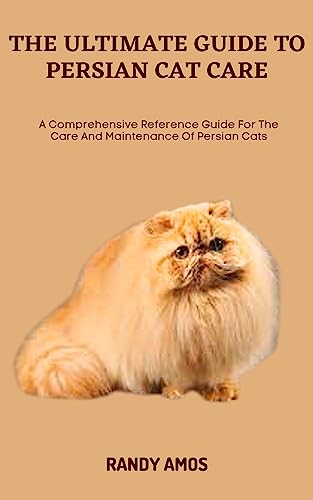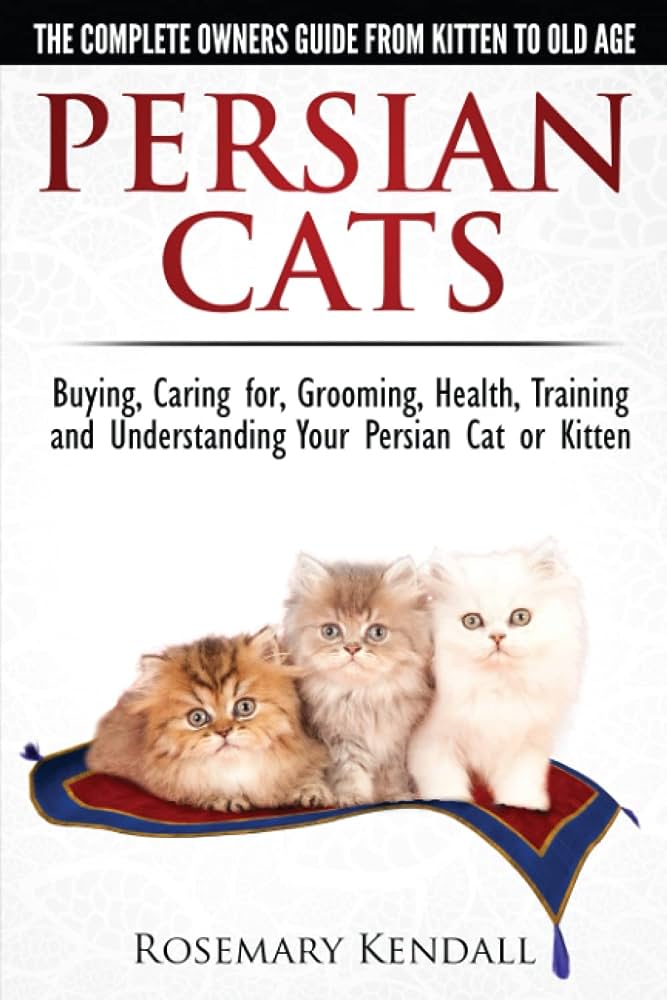Are you interested in learning more about Persian cat breeding? Well, you’ve come to the right place! In this comprehensive guide, you’ll find everything you need to know about breeding Persian cats. From the basics of genetics to the proper care and handling of pregnant cats, we’ve got it all covered. Whether you’re a seasoned breeder or just starting out, this guide will provide you with valuable insights and tips to ensure a successful breeding journey. So, grab a cup of tea and get ready to dive into the fascinating world of Persian cat breeding!
When it comes to Persian cat breeding, there are several important factors to consider. First and foremost, understanding the genetics behind coat colors and patterns is crucial. You’ll learn about the different variations and how to select the right cats for breeding to achieve desired traits. We’ll also discuss the importance of health testing and how to ensure the well-being of both the parents and the kittens. Additionally, we’ll explore the process of breeding, from mating to pregnancy and birth. You’ll discover the best practices for providing a safe and comfortable environment for the pregnant cat and her offspring. Throughout the guide, we’ll provide practical tips and advice based on expert knowledge and proven research. So, if you’re eager to learn more about Persian cat breeding, stay tuned for our upcoming articles where we’ll delve into these topics and answer the most common questions from our readers!

Persian Cat Breeding: A Comprehensive Guide
Persian cats are known for their luxurious and regal appearance, with long, flowing coats and stunningly expressive faces. If you are an admirer of these fabulous felines and wish to venture into the world of Persian cat breeding, this comprehensive guide will provide you with all the information you need to get started. From understanding their origins to caring for pregnant cats and their adorable kittens, this guide covers every aspect of Persian cat breeding. So, let’s dive into the enchanting world of Persian cat breeding together!
The Origins of Persian Cats
The history of Persian cats can be traced back to ancient Persia (modern-day Iran) and has spanned centuries. These magnificent cats were first documented in the 1600s, and their popularity grew during the Victorian era. Persian cats were highly sought after for their beauty and gentle nature, making them a symbol of elegance and luxury.
Characteristics of Persian Cats
One of the most striking features of Persian cats is their long, silky fur. They have a broad head with a flat face, large round eyes, and a distinctive snub nose. Persian cats come in a variety of colors and patterns, including solid, tabby, tortoiseshell, and bi-color. Their calm and gentle temperament makes them wonderful companions, and their regal demeanor adds to their allure.
Choosing a Persian Cat for Breeding
When selecting a Persian cat for breeding, several factors should be considered. It is essential to choose cats with good health, temperament, and conformation to breed healthy and well-rounded kittens. Look for cats with solid pedigrees, free from any genetic disorders that may be common in the breed. Consult with experienced breeders or a veterinarian to ensure you make informed decisions.
Preparing for Breeding
Before embarking on the breeding journey, it is crucial to prepare your Persian cats physically and emotionally. Ensure that your cats are in optimal health by providing quality nutrition, regular grooming, and adequate exercise. Schedule a visit to your veterinarian for a thorough health examination to rule out any underlying issues that could affect breeding.
Understanding the Heat Cycle
Female Persian cats, known as queens, go through a heat cycle, also called estrus, which is the fertile period in their reproductive cycle. It is essential to understand the various stages of the heat cycle to maximize the chances of successful breeding. Signs of heat include increased vocalization, restlessness, and increased affection towards male cats. Consult with your veterinarian or experienced breeders for guidance on identifying these signs accurately.
Breeding Techniques
Breeding techniques play a crucial role in the success of Persian cat breeding. One commonly used method is natural mating, where the male and female cats are allowed to mate freely. Another option is artificial insemination, which may be necessary in certain cases, such as when the stud cat is unable to physically mate with the queen. Consult with your veterinarian to determine the most suitable technique for your breeding goals.
Pregnancy and Care for the Pregnant Persian Cat
Once the breeding is successful, your Persian queen will enter pregnancy. It is essential to provide extra care and attention to ensure her well-being and the healthy development of the kittens. Make sure she has a comfortable and quiet space to rest and nest. Provide a balanced diet to support her nutritional needs, and monitor her closely for any signs of complications.
The Birthing Process
The birthing process, also known as labor or parturition, is a significant event in Persian cat breeding. It is vital to be prepared and knowledgeable about the signs and stages of labor to ensure a smooth delivery. The queen may exhibit nesting behavior, restlessness, and loss of appetite before labor begins. Provide a clean and warm birthing area and be prepared to assist if any complications arise.
Caring for the Kittens
Once the adorable Persian kittens arrive, they require proper care and attention to thrive. The mother cat will take care of most of their needs, but it is crucial to monitor their health and ensure they are nursing well. Provide a comfortable and safe environment for the kittens as they grow and develop. Introduce them to solid food gradually and socialize them to ensure they become well-adjusted and friendly adults.
Potential Complications in Breeding
Breeding Persian cats, like any other breed, comes with the possibility of complications. It is essential to be aware of potential issues that may arise during the breeding process, such as infertility, difficult labor, or genetic disorders. Regular veterinary check-ups, genetic testing, and close observation can help identify and address any complications as early as possible.
Genetic Considerations in Persian Cat Breeding
Persian cats can be prone to specific genetic conditions due to their distinct traits. It is crucial to be aware of these conditions and consider genetic testing to help prevent the transmission of hereditary diseases to future generations. Consult with your veterinarian and genetic specialists to understand the importance of responsible breeding practices and how to select cats with a low risk of genetic disorders.
Breeding Standards and Show Quality
For those interested in showing Persian cats, understanding the breed standards is essential. Before breeding, familiarize yourself with the specific standards set by breed associations or organizations. Breeding for show quality involves selecting cats that possess the desired traits and conform to these stringent standards. Consult with experienced breeders and attend cat shows to gain a deeper understanding of the breed standards.
Ethical Considerations in Breeding
Breeding Persian cats comes with ethical responsibilities. It is essential to prioritize the health and well-being of the cats above breeding goals. Breeding should only be done with the welfare of the cats in mind, ensuring their physical and emotional needs are met. Practice responsible breeding by avoiding excessive breeding, providing proper veterinary care, and finding suitable homes for the kittens.
The Future of Persian Cat Breeding
As with any breed, the future of Persian cat breeding lies in the hands of dedicated breeders who prioritize their cats’ well-being and genetic diversity. By adopting responsible breeding practices, continuously learning about the breed, and promoting awareness and education, we can ensure the preservation and improvement of this magnificent feline lineage for generations to come.
Frequently Asked Questions about Persian Cats
-
Q: Are Persian cats hypoallergenic? A: No, Persian cats are not hypoallergenic. They produce allergens, primarily found in their saliva and dander, which can trigger allergic reactions in sensitive individuals.
-
Q: How often do Persian cats need grooming? A: Persian cats require daily grooming to maintain their long and silky coats. Regular brushing helps prevent matting and keeps their fur free from tangles and debris.
-
Q: Are Persian cats high maintenance? A: Yes, Persian cats are considered high maintenance due to their grooming needs. They require daily brushing, regular bathing, and eye cleaning to keep them healthy and looking their best.
-
Q: Do Persian cats get along with other pets? A: Persian cats generally have a calm and gentle nature, which makes them adaptable to living with other pets. However, proper introductions and gradual socialization are necessary for a harmonious coexistence.
-
Q: How long do Persian cats live? A: Persian cats have an average lifespan of 12 to 16 years, but with proper care, they can live even longer. Regular veterinary check-ups, a healthy diet, and a stress-free environment contribute to their longevity.
-
Q: Are Persian cats good with children? A: Persian cats are generally tolerant and gentle, making them suitable companions for children. However, supervision and teaching children respectful behavior towards cats are vital to ensure safe interactions.
-
Q: Do Persian cats require a specific diet? A: Persian cats benefit from a well-balanced diet specifically formulated for their needs. Consult with your veterinarian for recommendations on the best diet for your Persian cat based on age, health, and activity level.
-
Q: Are Persian cats prone to health issues? A: Persian cats can be prone to certain health issues, including respiratory problems, dental issues, and eye problems. Regular veterinary care and genetic testing can help identify and address these issues.
-
Q: Can Persian cats be kept as outdoor cats? A: Due to their long fur and flat faces, Persian cats are better suited for an indoor lifestyle. Their delicate features make them more vulnerable to temperature extremes and potential injuries.
-
Q: How many kittens does a Persian cat typically have? A: Persian cats typically have litters consisting of 1 to 4 kittens. However, larger litters are possible but less common. Proper care, nutrition, and veterinary assistance are essential during the birthing process and kitten care.
Keep in mind that responsible breeding practices and individual cat care may vary, so consulting with experts and experienced breeders is always recommended when caring for Persian cats.

